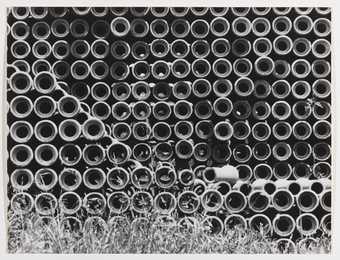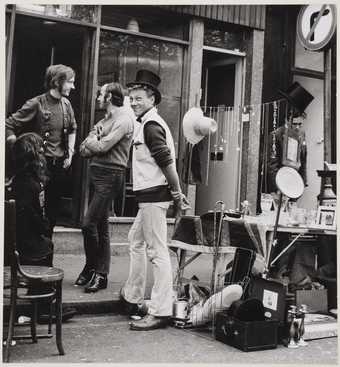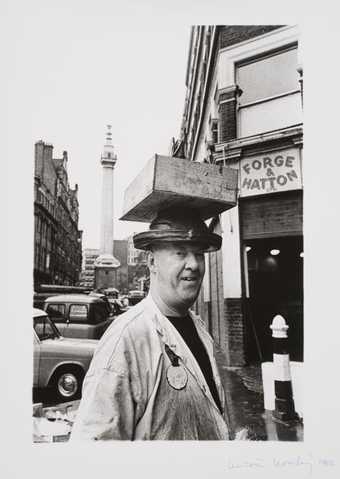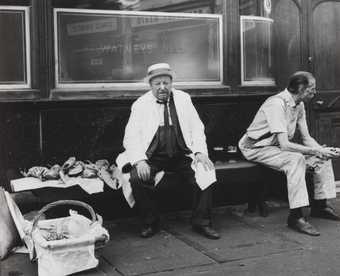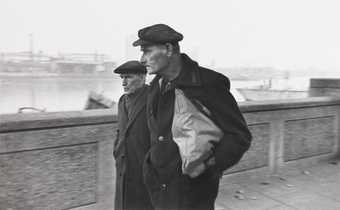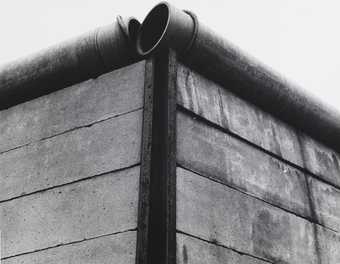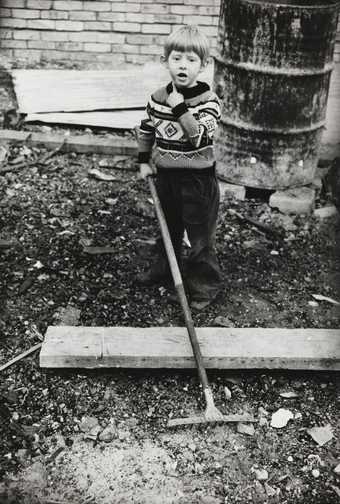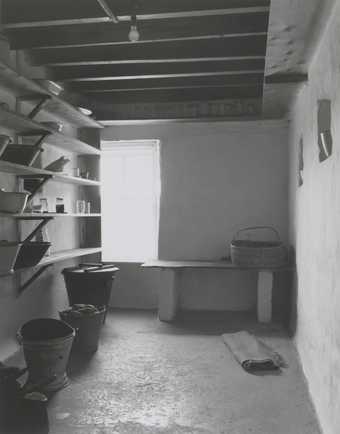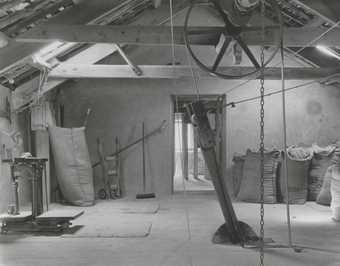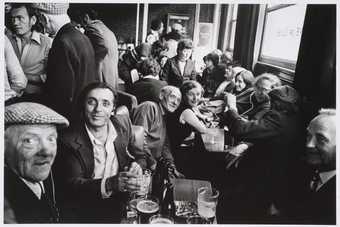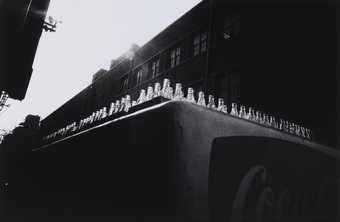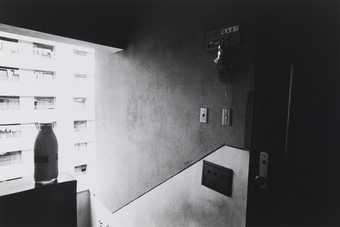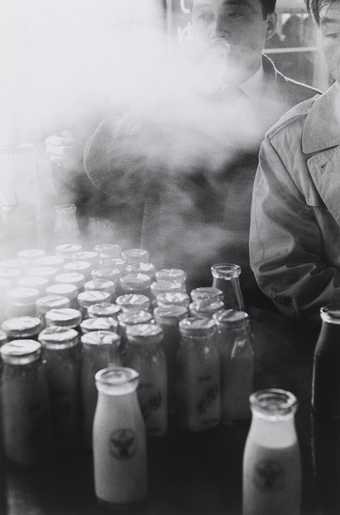
Not on display
- Artist
- Gaspar Gasparian 1899–1966
- Original title
- Triplice
- Medium
- Photograph, gelatin silver print on paper
- Dimensions
- Image: 395 × 296 mm
- Collection
- Lent by the Tate Americas Foundation, courtesy of the Latin American Acquisitions Committee 2014
On long term loan - Reference
- L03596
Summary
Triple is a black and white silver gelatin photographic print made by Brazilian artist Gaspar Gasparian in 1958. The composition shows three glass bottles of different shapes and sizes in a studio setting. They are arranged so that a slim clear glass bottle is placed on a white surface against a black background, with a slightly taller clear bottle immediately behind it. Next to this, a larger opaque black vessel is placed on a black surface against a white background. The bold contrasts of light and dark in the background surfaces create a chequerboard effect, which is reversed and distorted within the forms of the two clear bottles by the refraction of the light through the glass. The print was not editioned: Gasparian generally made very few prints, with a maximum of three per image.
Gasparian often used props in the studio to create distorted effects, as can be seen in a slightly earlier work, Mediunic 1952 (Tate L03593). Alternatively, as here, he used one of the objects in the composition itself as a ‘filter’. The use of physical objects to act as filters anticipates the employment of filters attached to the camera lens and, more recently, to the way contemporary photographers use filters available in digital technology. Gasparian’s approach to shooting and his darkroom technique were also unconventional. He completed all of his cropping and editing in the darkroom, beginning by taking a wide angle shot encompassing an entire scene and then arriving at the final cropped image from the contact print, often disregarding the main point of action and instead focusing on an abstract angle or shadow.
Throughout his twenty-year career Gasparian made work both in the studio and on the street, showing his versatility and will to experiment. This work is typical of his studio practice, which commonly included still life studies and experiments with light and shadow. He often used glass and other studio props to produce manipulated effects, or complicated studio setups to suggest illusions of scale and depth of field. Gasparian also practiced street photography, making work in both São Paulo and Rio de Janeiro as well as in post-war Europe.
A member of several experimental photo clubs in Brazil throughout his career, in the 1950s Gasparian formed the so-called ‘Group of Six’, a collective of photographers engaged with furthering discussions around photography and photographic technique, aiming to push the medium further towards abstract and modernist aesthetics. Part of the Group’s activity involved them setting themselves tasks based on the experimental photographing of still life, and this image is representative of the tabletop compositions that Gasparian produced during this period.
Further reading
Gaspar Gasparian: Un fotografo Paulista, São Paulo 1988.
Gaspar Gasparian: A Photographer, exhibition leaflet, Pinacoteca de Estado de São Paulo, São Paulo 2010.
Shoair Mavlian
May 2014
Does this text contain inaccurate information or language that you feel we should improve or change? We would like to hear from you.
Explore
- emotions, concepts and ideas(16,416)
-
- formal qualities(12,454)
-
- photographic(4,673)
- vessels and containers(2,157)
-
- bottle(289)
You might like
-
Sir Don McCullin CBE A Dead North Vietnamese Soldier, The Battle of Hue
1968, printed 2013 -
Gaspar Gasparian Mediunic
1952 -
Sameer Makarius Stack of Sewer Pipes
1957 -
Dorothy Bohm Earlham Street, Covent Garden, London
c.1960–9 -
Milon Novotny Billingsgate Market, London
1966 -
Dorothy Bohm Billingsgate Fish Market, London
c.1960 -
Milon Novotny Chelsea Embankment, London
1966 -
Harry Shunk, János Kender Shunk-Kender ‘World Tour’ Series, Berlin
1960s -
Errol Sawyer Untitled
1947 -
Chris Killip Annie Kaighen’s dairy, Cronk y Voddy
1970–3, printed 2012–13 -
Chris Killip Interior, Kella Mill, Sulby
1970–3, printed 2012–13 -
Marketa Luskacova People in Knave of Club’s pub, Club Row, London
1976, later print -
Yutaka Takanashi Toshi-e
1974, printed 2012 -
Yutaka Takanashi Tokyo-jin
1974, printed 2012 -
Yutaka Takanashi Tokyo-jin
1974, printed 2012



